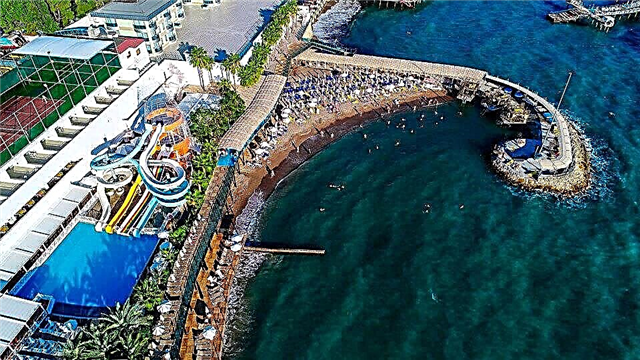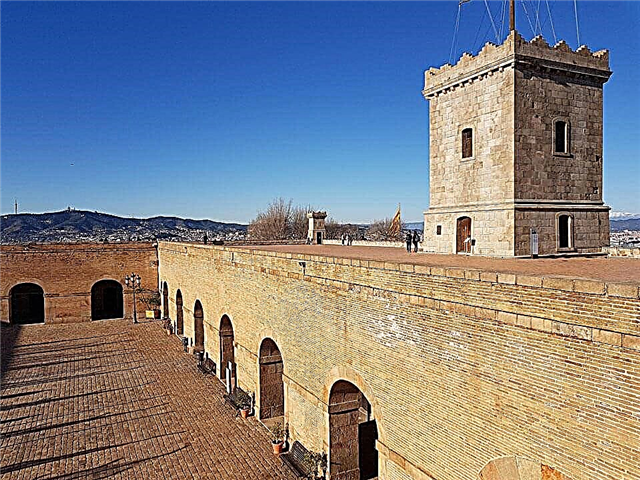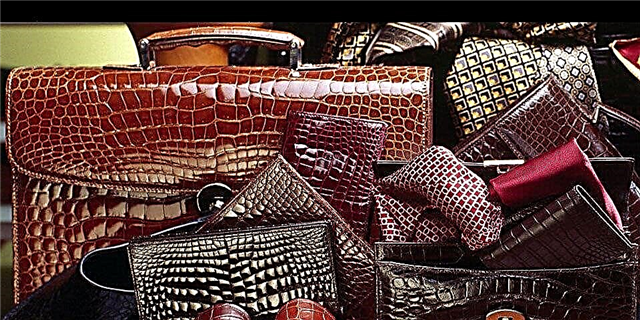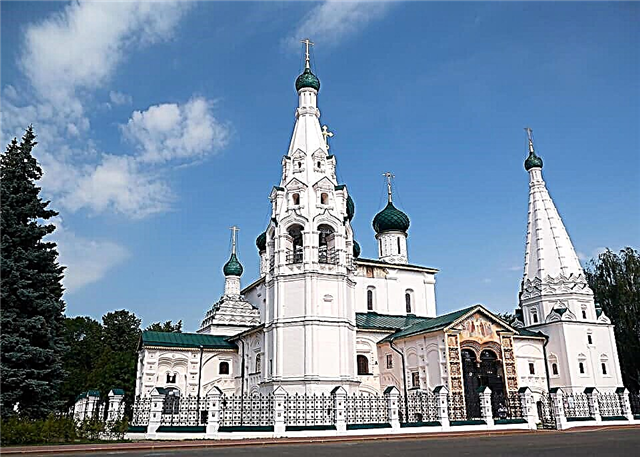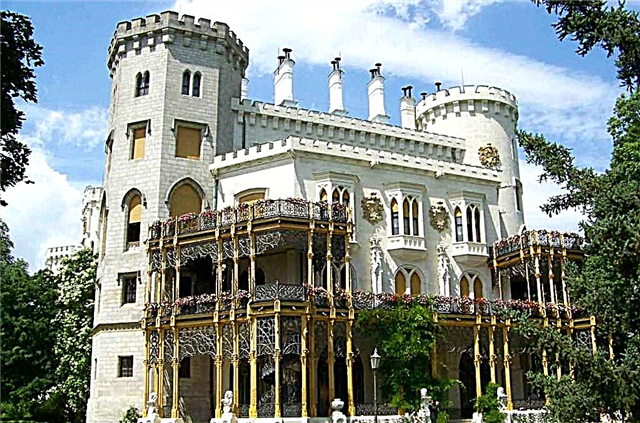The Yaroslavl Region lies in the center of the European part of the country. It has a rich history and picturesque nature. The towns and villages located here are witnesses of the birth of the Russian state, the hard struggle against the Tatar-Mongol yoke, the raids of the Crimean Khanate and the difficult Time of Troubles. This region is one of the cultural treasures of Russia and a significant part of its "Golden Ring".
Ancient Russian cities of the Yaroslavl region
1.254 million people live in the Yaroslavl region, more than 81% are urban population. In addition to the regional center, there are several more cities in the Yaroslavl region that are included in the popular routes of the "Golden Ring" of Russia. The oldest of them are Rostov Veliky, Pereslavl-Zalessky, Uglich, Rybinsk, Myshkin, Tutaev, Danilov, Gavrilov Yam and Lyubim.
Yaroslavl
Article: Yaroslavl - the capital of the "Golden Ring" of Russia

Church of Elijah the Prophet in Yaroslavl
Travelers are attracted by the more than a thousand-year history of the ancient Russian city. Yaroslavl is considered the first Christian settlement created on the Volga. The regional center is home to 606 thousand people and there are 800 cultural and historical monuments.
Tourists come to Yaroslavl to look at the beautiful, well-equipped Volga embankment, the picturesque old churches of John the Baptist and Elijah the Prophet, the Metropolitan Chambers and the Tolgsky Svyato-Vvedensky Monastery. Many guests must visit the historical and art museum-reserve.
Pereslavl-Zalessky
Article: Pereslavl-Zalessky - the city of ancient legends

Transfiguration Cathedral in Pereslavl-Zalessky
Ancient Pereslavl-Zalessky is one of the most visited places of the "Golden Ring". The first mention of the city dates back to 907. The Grand Duke Alexander Nevsky was born and lived here, and the ships of the famous "amusing" flotilla were built in the shipyards on the shores of Lake Pleshcheevo in the times of Peter the Great.
Tourists go to Pereslavl-Zalessky for the beautiful architectural ensembles of ancient monasteries - Goritsky, Nikolsky, Fedorovsky, Holy Trinity Danilov and Nikitsky. In the center of the city, on Red Square, the ancient Transfiguration Cathedral, erected at the beginning of the 12th century, is the same age as Pereslavl itself. This temple is famous as the site of the baptism of Alexander Nevsky.
Rostov the Great
Article: Rostov the Great - bell ringing and enamel

View of the main entrance to the Rostov Kremlin
A small town, where today 30 thousand people live, has played a huge role in the history of our country. Rostov is considered the birthplace of the famous enamel and the oldest city in Russia - it appeared in 862. The flow of tourists who want to see the majestic Kremlin on the shores of Lake Nero does not stop either in summer or in winter.
Many pilgrims come to the ancient city who seek to touch Christian shrines Spaso-Yakovlevsky, Abraham and Rozhdestvensky monasteries, and admire the graceful forms Church of Isidore the Blessed on the Walls... In Rostov, there is a practically rebuilt Varnitsky Holy Trinity Sergius Monastery, which was founded in the 15th century.
Uglich
Article: Sights of Uglich - pages of the history of the Russian city

View of the Uglich Kremlin
The small Volga town is known as the place where the hard times for Russia began. In 1591, the eight-year-old Tsarevich Dmitry, the heir to the Moscow throne, died here. According to one version, the boy was killed by order of Boris Godunov.
In Uglich you can see the monuments of ancient Russian architecture - temple of Tsarevich Demetrius on the Blood, built at the end of the 17th century, the chambers of local appanage princes, the Epiphany Cathedral and Savior Transfiguration Church. Annually, on May 28, on the day of the death of the tsarevich in Uglich, the festive decade "Blagostin" begins. During it, concerts, contests and meetings with famous people are held.
Attractions of the Yaroslavl region
Rostov Borisoglebsky Monastery
Article: Rostov Borisoglebsky Monastery - a famous monastery on the way from Rostov to Uglich

General view of the Rostov Borisoglebsky Monastery
The history of the founding of the monastery in the village of Borisoglebsk is associated with Sergius of Radonezh. In 1363, an ascetic of the Russian Orthodox Church came to pacify the hostile local princes and met here the hermit monks Fyodor and Paul.
At first, the monastery was built of wood, and then it took on the appearance of a real powerful fortress. According to legend, the legendary Peresvet took monastic vows outside the monastery walls. In 1924 the monastery was closed, but 70 years later it was returned to the faithful again.
Lake Nero
Article: Lake Nero - the birthplace of Rostov-Suzdal Rus

View of the Rostov Kremlin from Lake Nero
In the midst of the industrial and agrarian landscapes of the Yaroslavl region, there is a picturesque reservoir, which is covered with secrets and legends. On the shores of Lake Nero, the Rostov-Suzdal principality arose, which was the basis of ancient Russia. The natural oasis has a large area - 51.7 sq. km, but a shallow depth - up to 3.6 m. According to scientists, the age of the lake has exceeded 500 thousand years. The first tribes began to live on its shores about 6,000 years ago. This is evidenced by the remains of ancient pottery and tools made of stone and bone. Nero is associated with legends about the ancient Kitezh-grad, which, according to ancient chronicles, stood on the Yaroslavl lands in the XII-XIII centuries. True, no archaeological finds have been made to confirm this assumption.
Church of St. John the Evangelist on Ishna
Article: Church of St. John the Evangelist on Ishna - a monument to the skill of Rostov carpenters of the 17th century

View of the Church of St. John the Evangelist on Ishna
The high church near the village of Ishna in the Rostov region is 335 (2021) years old. This is surprising because the old church was built of wood. A unique monument to Rostov carpenters looks like a fairytale palace.There are many chopped and carved elements in the decor of the wooden church, so artists have always liked to depict it.
The tiered temple stands on a high basement. It is believed that in the past, spacious cellars were used as storerooms and for storing the local treasury. The wooden quadrangle and the refectory have outbuildings or “annexes”. At the very top, there is a dome and a drum with a plowshare bulbous head with a cross.
Pleshcheyevo lake
Article: Pleshcheyevo lake - the pearl of Zalesye

Kitesurfing and windsurfing on Pleshcheevoye Lake
Near the town of Pereslavl-Zalessky lies a reservoir, which is called one of the best decorations of the "Golden Ring". The large rounded lake has dimensions of 9.5 by 6.5 km, and its depth reaches 25 m. Lake Pleshcheyevo originated in the Ice Age and is located at an altitude of 170 m above sea level. 19 rivers and streams flow into the reservoir, the largest of which is the Trubezh river, and only one river flows out - the Veksa.
Pilgrims come to the lake to collect water from the famous Varvarin spring and relax on the Alexander Mountain. Connoisseurs of history are interested in the ancient earthen ramparts that remained after the medieval town of Kleshchino.

View of the Nikitsky Monastery and Lake Pleshcheyevo
There are many interesting museums in the surrounding villages, where you can see a wooden small boat of Peter I, old gramophone records, teapots, steam locomotives, wagons, collection of coins and banknotes. Fans of outdoor activities love the Yaroslavl reservoir for excellent opportunities for fishing, windsurfing and kitesurfing.
Blue stone
Article: Blue stone - a legend on the shores of Lake Pleshcheevo
One of the most famous sights of Lake Pleshcheyevo is a huge boulder weighing about 12 tons. The legendary Blue Stone is about 3 m long. It was brought to the shore of the lake during the Ice Age.Now a large boulder has practically grown into the ground and rises only 30 cm above it.

View of the Blue Stone
The stone is called blue because it is composed of fine-grained quartz biotite schist. In the light of the sun, quartz grains play against the background of biotite flakes, and the effect of a bluish glow is created.
The most popular legend says that the stone "moves" on its own. The wonderful legend was not born out of nowhere. Over the long history, the coastline of Lake Pleshcheyevo has changed several times. Once the boulder lay at the bottom, and then "unexpectedly" found itself near the water's edge.
Chapel Cross near Pereslavl-Zalessky
Article: Chapel of the Cross - commemorating the birth of the Tsar's son

View of the Chapel Cross
At the entrance to Pereslavl-Zalessky from Moscow, there is a beautiful hipped-roof chapel dedicated to the great martyr Fyodor Stratilat. The Chapel of the Cross was erected in the 17th century on the place where Tsarevich Fyodor, the youngest son of Tsar Ivan the Terrible, the last representative of the Rurik family, was born.
Fedor ascended the throne after his father and ruled Russia from 1584 to 1598. A stone chapel, which has survived to this day, was erected instead of a wooden building. The monument of Russian architecture looks like a squat open tent on columns and is decorated with elegant brick ornaments.
Manors of the Yaroslavl region

Museum-estate of the Ganshin
But not only cities make up the historical heritage of the Yaroslavl region. On its territory, many ancient villages and estates have been preserved, associated with various pages of the history of Russia and the names of its famous citizens.
Near Pereslavl-Zalessky there is the Ganshin estate-museum, which tells about the history of peasant life. The Museum of Wooden Architecture in Myshkin is also dedicated to traditional village Russian architecture. Here you can visit houses, a bathhouse, look into the chapel and the village smithy. And in the Nekrasovsky district of the region, in the village of Profintern, it is worth looking at the palace of the merchants Ponizovskins, built in a fusion of eclecticism and modernism at the beginning of the last century.

Memorial House-Museum of N.A.Morozov
An interesting story is connected with the former owner of the estate in the village of Borok - scientist Nikolai Alexandrovich Morozov. The house and manor park that belonged to him can still be visited today. ON THE. Morozov was called by his contemporaries the Russian Count of Monte Cristo. In his youth, he was associated with the Narodnaya Volya movement and was convicted for this. During imprisonment in Peter and Paul and Shlisselburgskaya fortresses, this versatile scientist has written 26 volumes of research in physics, astronomy, mathematics, linguistics and aeronautics.

Museum-estate "Karabikha"
15 km south of Yaroslavl, in the estate "Karabikha" there is a memorial house-museum of the great Russian poet Nikolai Alekseevich Nekrasov. Here, on the Yaroslavl land, he created the poems "Frost - Red Nose", "Russian Women" and "Who Lives Well in Russia". The All-Russian Nekrasov Festival of Poetry is held annually on July 7 in "Karabikha".
In the village of Rybnitsa, it is worth visiting the house-museum of the famous sculptor Alexander Mikhailovich Opekushin (1838-1923). The monuments of M.Yu. Lermontov and A.S. Pushkin is known to every Russian since childhood.
Museums of the Yaroslavl Region

At the Museum "Music and Time" in Yaroslavl
There are more than 250 museums in the region, the expositions of which reflect the thousand-year history of the Yaroslavl lands. In the city of Pereslavl-Zalessky alone, there are about 20 museum collections.
Among the Yaroslavl museums, the Museum "Music and Time", created in 1993 in the regional center, is notable. It became the first private museum in the post-Soviet space. In a small mansion on the Volzhskaya embankment, sonorous bells, old music boxes and barrel organs, gramophones and gramophone records, various musical instruments, icons and old clocks are exhibited.

Exposition in the Finift Museum in the Rostov Kremlin
Several museums are also open in the Rostov Kremlin. And the most visited of the bottom is, perhaps, the enamel museum. It contains the richest collection of beautiful enamel miniatures - real works of art. Museums of a mouse, a workhorse, steam locomotives, a coachman, gramophone records, radio, old sewing machines - what is there only in the Yaroslavl region!
Natural monuments of the Yaroslavl region
The plain territories of the Yaroslavl region occupy 36.17 thousand square meters. km. Slightly less than half of them are covered with mixed forests. To protect the pristine nature and species diversity in this region, several protected areas have been created: the Darwin Reserve, the Pleshcheyevo Lake National Park and 45 state reserves. In addition, 321 objects in the Yaroslavl region have been declared a natural monument.

View of Lake Pleshcheyevo from Aleksandrovaya Mountain
The "Yaroslavl" nature reserve was organized on the bank of the Kostroma reservoir. It contains over 40 protected species of fauna, including beavers, desman and white-tailed eagle. Forest "Verkhnevolzhsky" reserve was created to preserve the southern taiga biocenosis. It is inhabited by brown bears, wolves, foxes, raccoon dogs, lynxes and other mammals typical of Central Russian forests. An interesting natural monument created by human hands has become dendrological garden named after S.F. Kharitonov in Pereslavl-Zalessky... In it, on an area of about 60 hectares, the richest collection of plants from all continents is collected.

In the dendrological garden. Kharitonov, on the "Path of Fairy Tales"
Many travelers come to this ancient Russian city specially to see the picturesque Pleshcheyevo Lake. It attracts fishermen, windsurfers, and lovers of antiquities, as well as those who want to touch the legendary Blue Stone, which has been lying from time immemorial on the lake shore near Alexandrovaya Gora. And in mid-July, on the shores of Lake Plescheevo, the annual festival of balloonists on hot air balloons "The Golden Ring of Russia" is held.
Where to go with children in the Yaroslavl region

In the Yaroslavl Museum "Grandfather Mazai"
In the regional center - Yaroslavl, the museum "Grandfather Mazai", the private museum "Favorite Bear", the Museum of Entertaining Sciences of Einstein, the Planetarium, the zoo and the children's railway are open for children. In Pereslavl-Zalessky with children, you should definitely look into the local museums of teapots and iron, in the interactive museum-workshop "Nakhodka" and the museum of cunning and ingenuity. In addition, at the beginning of June every year in Pereslavl-Zalessky a colorful festival "On a visit to Berendey" takes place.
Not far from this ancient city in the village of Vasilevo there is a museum called "The Birth of a Fairy Tale", where children can meet the heroes of their favorite Russian fairy tales, made by the hands of the talented artist A. Tikhonov. The Uglich Museum of Myths and Superstitions can also boast of such an exposition. Its author, artist Daria Chuzhaya, made life-size images of fairy-tale characters.

Museum of teapots in Pereslavl-Zalessky
In Myshkin, children really like the tourist complex - the carved palace “Myshkin's Chambers” and the museum of felt boots, in Rostov - the entertaining museum “Princess Frog”, and in Poshekhonye - the museum “Toptygin House”.
Annual Yaroslavl festivals and holidays are of great interest for traveling with children. Almost all of them take place during the warm season. On July 18, it is worth coming to Tutaev to take part in the festival “Romanovskaya Sheep - the Golden Fleece of Russia”. And at the end of July, two interesting holidays take place at once. In Pereslavl-Zalessky, historical clubs gather for the festival "There will be a Russian fleet!", And in Myshkin, the festival of retro technology "Myshkinsky Samokhod" is being held.

Museum "Princess Frog" in Rostov the Great
In early August, in the village of Ermakovo, Rybinsk region, a wonderful tourist holiday "Visiting Ryaba's chicken" is organized.And at the end of August, you can come to Rostov Veliky for the tourist holiday "Alyosha Popovich - the Rostov hero".
There are interesting attractions and museums for children in almost every city of the Yaroslavl Region. In most of them, the organizers offer young guests a deeper plunge into the secrets of ancient crafts and hold interesting master classes for children in pottery, wood painting, making birch bark jewelry, souvenirs and dolls.

Tourist complex "Myshkin chambers" in Myshkin
What to bring as a keepsake
The traditional souvenirs that people try to buy in the Yaroslavl region are linen products, handmade black-glazed ceramics, excellent Kuznetsovsky porcelain, elegant Pereslavl embroidery and enamel jewelry. Practical sheepskin products can be brought from Tutaev. From Yaroslavl - ringing bells, which became popular at the time when craftsmen began to work in the city, casting bells for temples.

Transfiguration Cathedral in Rybinsk
Of the "tasty souvenirs", the most popular buyers are Rostov kvass, Poshekhonsk and Uglich cheeses, Yaroslavl beer, Stary Kashin balsam and Pereslavl smoked vendace. A good time for shopping is early fall, which is the traditional time for agricultural fairs. In early September, Rybinsk celebrates the "Day of the Merchant", and an elegant merchant fair is held on the Volzhskaya embankment of the city. On the same days, Rostov hosts the annual gastronomic festival "Lukova Yarmonka".

